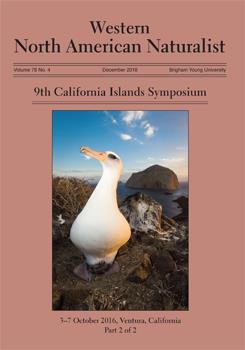Silvetia compressa is a common rocky intertidal fucoid that plays an important role in the community and has experienced widespread declines throughout California. The causes of these declines are unknown, but sea surface temperature (SST) is considered one of the dominant factors affecting intertidal algae. The 2015–2016 El Niño introduced anomalously high SSTs to southern California, which may have impacted rocky intertidal species. This study investigates temporal changes in abundance of S. compressa with respect to SST at 4 sites on San Clemente Island (SCI), California, from 2012 to 2016. Point-intercept data were used to quantify percent cover during biannual intertidal surveys. To correlate SST with changes in S. compressa percent cover, we utilized SST data collected approximately 50 km southeast of SCI from the National Data Buoy Center. Our results indicated significant declines in S. compressa in spring 2015 across all 4 sites following SST anomalies that began in 2014. Linear regression between S. compressa percent cover and the previous year’s maximum SSTs showed a significant negative relationship, indicating that reduced abundance of S. compressa was moderately associated with elevated SSTs.
How to translate text using browser tools
9 March 2018
Changes in Abundance of Silvetia compressa at San Clemente Island before and during the 2015–2016 El Niño
Suzanne Graham,
Brian Hong,
Samantha Mutschler,
Brendan Saunders,
Jessica Bredvik
ACCESS THE FULL ARTICLE





